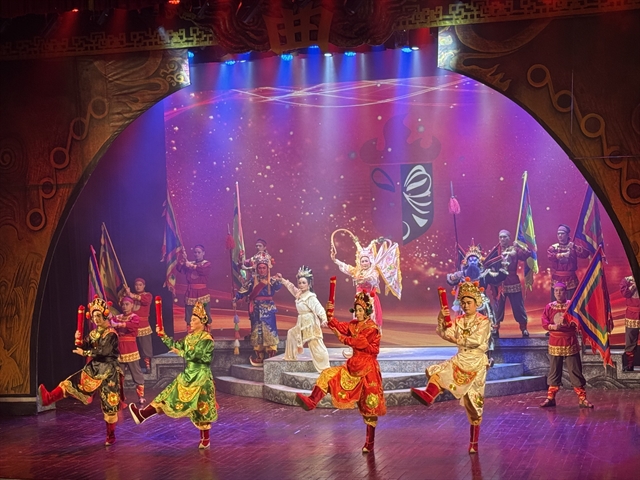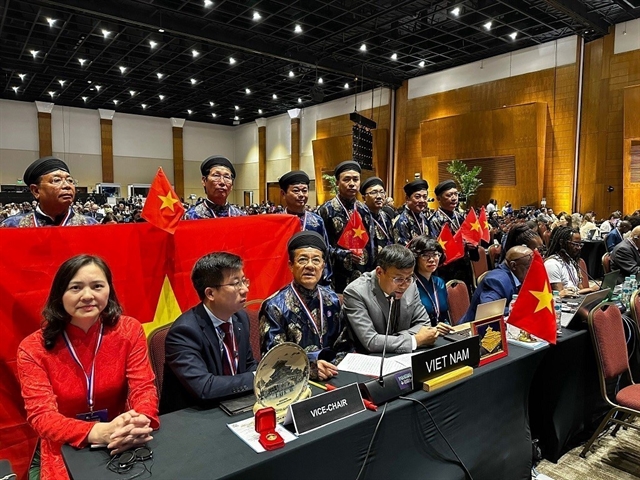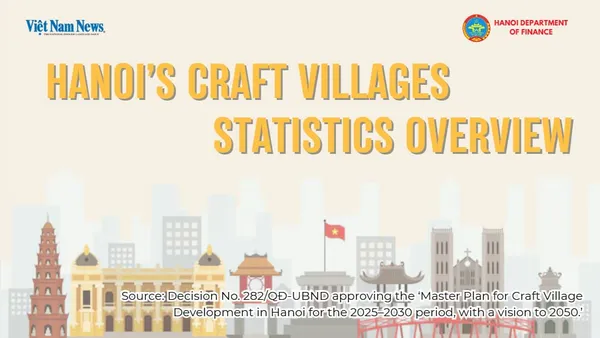 Life & Style
Life & Style

 |
| Festival of Bà Chúa Xứ Goddess in Châu Đốc’s Sam Mountain is held from the 23rd to the 27th day of the fourth lunar month. VNA/VNS Photo Công Mạo |
AN GIANG — The profound Festival of Vía Bà Chúa Xứ (Holy Mother of the Realm) or Goddess at Sam Mountain in the southern province of An Giang has been named within the list of UNESCO's Intangible Cultural Heritages of Humanity.
The recognition was made during the 19th session of the UNESCO’s Intergovernmental Committee for the Safeguarding of Intangible Cultural Heritage, held in Asunción, Paraguay, yesterday morning (Việt Nam time).
The UNESCO recognition highlights Việt Nam’s diverse and long-standing culture, Permanent Deputy Minister of Foreign Affairs Nguyễn Minh Vũ, who is also Chairman of the Việt Nam National Commission for UNESCO, said at the meeting session.
This acknowledgment significantly contributes to efforts in preserving and promoting cultural heritages at both national and international levels, he added, stressing as Vice Chairman of the General Assembly of the State Parties to the 2003 Convention for the Safeguarding of the Intangible Cultural Heritage, Việt Nam is committed to preserving and promoting this and other heritages for future generations.
The festival is one of the biggest religious events in the south, representing a protector of the Vietnamese borders and a guardian of prosperity and health.
It is held in Châu Đốc’s Sam Mountain in An Giang Province from the 23rd to the 27th day of the fourth lunar month, with the main rituals on the 25th at the Bà Chúa Xứ Temple. The temple itself was recognised as a national monument in 1980.
Multiple solemn rites are organised on festive days, including the washing of the statue of the lady, the Túc yết rite, Xây chầu rite and Chánh tế rite, which are carried out in that order.
Two big candles in front of the holy mother's statue are lit and this is followed by the offering of incense, wine and tea for her while praying. After that, a specially selected group of women perform a bathing ritual for the statue with fragrant water infused with jasmine and cinnamon behind a curtain. This entire ceremony lasts for about an hour.
Túc yết, being the main rite, begins at midnight on the 25th and continues into the early morning of the 26th. The Xây chầu rite will be held afterwards with prayers for good weather and a wealthy life. The Chánh tế rite is similar to the Túc yết rite, marking the end of the festival.
The worship of the Lady of the Realm contains different cultural layers, making it difficult to trace back to the precise origin or background of the custom, according to historians.
In 2014, the Vía Bà Chúa Xứ Festival at Sam Mountain was included in the list of National Intangible Cultural Heritage by the Ministry of Culture, Sports and Tourism.
At the session in Paraguay, Lê Hồng Quang, Secretary of the An Giang provincial Party Committee, pledged to work with the local community to preserve and enhance cultural values of this heritage ensuring its alignment with sustainable development goals.
 |
| Việt Nam delegates at the 19 session of the UNESCO’s Intergovernmental Committee for the Safeguarding of Intangible Cultural Heritage in Asunción, Paraguay.VNA/VNS Photo |
The festival is the second heritage in the southern region to become an Intangible Cultural Heritage of Humanity, after Đờn Ca Tài Tử (amateur southern folk music) in 2013.
Việt Nam's list of Intangible Cultural Heritages of Humanity and the year they were reecognised includes the art of pottery-making of Chăm people (2022), the xòe dance of the Thái people (2021), practices of then by Tày, Nùng and Thái ethnic groups (2019), the art of bài chòi in the central region and xoan singing of Phú Thọ Province (2017).
Others listed include the Việt beliefs in the Mother Goddesses of Three Realms (2016), tugging rituals and games (2015), Ví and Giặm Nghệ Tĩnh folk songs in central region (2014), worship of the Hùng Kings in Phú Thọ (2012), the Gióng Festival of Phù Ðổng and Sóc temples (2010), Ca Trù singing and Quan Họ Bắc Ninh folk songs (2009), the space for gong culture (2005) and Nhã Nhạc, Vietnamese court music (2003). VNS




